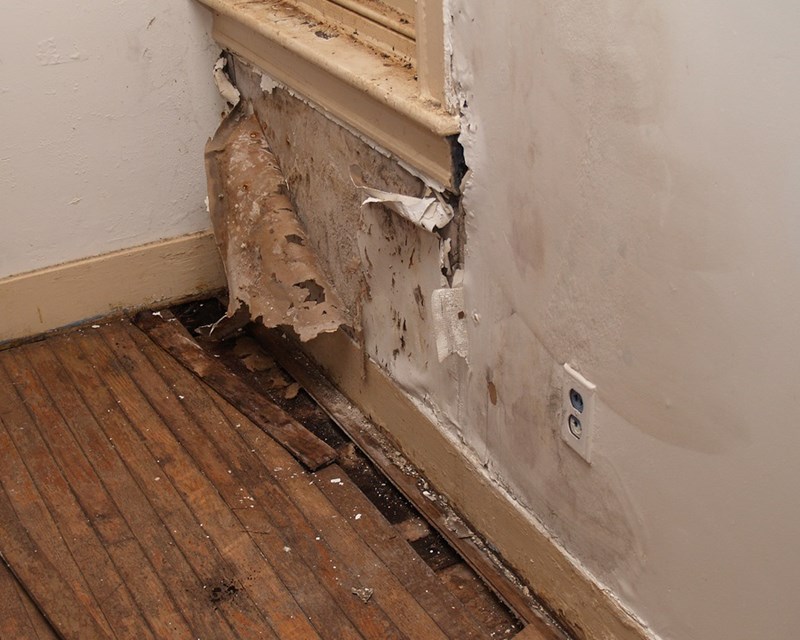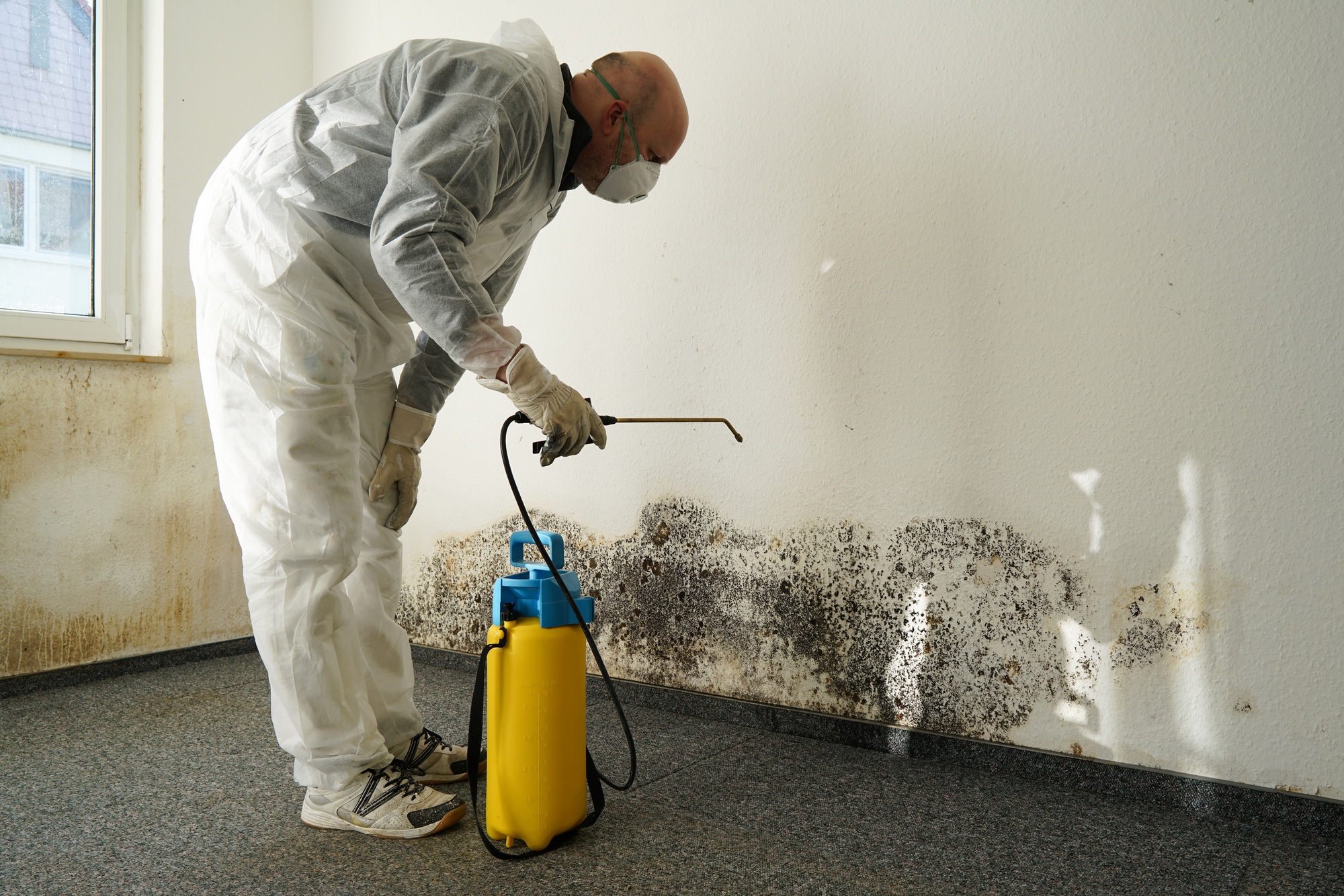Professional Water Damage Restoration for Homes and Businesses Near You
Professional Water Damage Restoration for Homes and Businesses Near You
Blog Article
The Refine of Water Damage Cleaning: Ensuring Your Home Is Restored Successfully
Water damage can be a daunting obstacle for homeowners, demanding a careful and structured cleanup procedure to restore safety and security and performance. Originally, an extensive analysis is vital to recognize the extent of the damages and determine the suitable removal procedures. Following this, efficient water removal strategies play a pivotal role in reducing more harm. The nuances of drying out, sterilizing, and eventual repair are just as essential and usually neglected. Comprehending these phases can make a substantial difference in the end result of your home's repair, triggering a closer consider what each action entails.
Evaluating the Damages
Upon uncovering water damage, the primary step is to completely evaluate the extent of the influence. This initial analysis is vital, as it helps establish the needed steps for reliable clean-up and repair. Begin by evaluating the influenced areas, consisting of walls, ceilings, floors, and personal valuables, to recognize the resource of the water invasion, whether from flooding, leaks, or condensation.
Documenting the damages is crucial for both insurance policy claims and intending restoration initiatives - damage restoration services. Use pictures and composed notes to record the extent of the damage, keeping in mind any damaged architectural elements and materials. Pay unique focus to locations that might not be immediately noticeable, such as behind wall surfaces and under carpetings, as hidden wetness can bring about more problems, including mold growth
Furthermore, analyze the timeline of the water direct exposure. Ultimately, an extensive analysis lays the groundwork for an effective water damage cleaning process, making certain that all impacted areas are addressed properly and completely.
Water Removal Strategies

Experts commonly utilize completely submersible pumps for bigger quantities of water, which can promptly alleviate flooding in basements or other impacted locations. For smaller sized amounts, wet/dry vacuums are commonly utilized to draw out residual moisture from carpetings and tough surface areas. In addition, using mobile extractors permits for targeted removal in confined areas or areas with delicate products.
In instances of polluted water, such as sewage or floodwater, advanced removal methods may entail making use of biohazard equipment to ensure safety and security and conformity with wellness guidelines. High-powered extraction devices are vital in minimizing water retention in structural products, which can lead to mold and mildew development and architectural degeneration otherwise resolved promptly.
Inevitably, the efficiency of water removal strategies plays a critical duty in the general success of the water damage cleanup process, preparing for subsequent reconstruction initiatives.
Drying and Dehumidification
When standing water has actually been efficiently removed, the next important stage in the water damage cleaning process is drying and dehumidification. This step is important to stop more damage and mold development, which can take place within 24 to two days in wet environments.
To accomplish reliable drying out, specialized devices such as industrial-grade air moving companies and dehumidifiers is used. Air movers flow air across wet surfaces, improving evaporation prices, while dehumidifiers reduce moisture levels in the air, advertising a conducive atmosphere for drying. The mix of these tools makes sure that moisture is extracted from walls, furnishings, and floorings, permitting them to completely dry completely.
It is very important to keep an eye on the drying out procedure closely. Experts usually make use of dampness meters to evaluate the dampness material in different materials, making sure that all affected areas get to appropriate dry skin degrees. This thorough technique assists to stop concealed moisture pockets that could bring about architectural damage or undesirable mold and mildew growth.

Cleaning and Disinfecting
After the drying and dehumidification phase is full, the following vital action in water damages clean-up is cleansing and sanitizing the impacted locations. This process is essential to protect against the growth of mold, germs, and other virus that grow in wet environments.
The cleaning phase usually entails getting rid of any kind of debris, dirt, and pollutants from surface areas making use of specialized cleaning agents. For hard surfaces, a combination of soap and water or business cleaning items is often employed. Soft products, such as upholstery and carpetings, might call for more considerable cleaning methods, including steam cleansing or deep extraction techniques, to guarantee extensive cleanliness.

Sterilizing water damaged plaster complies with cleaning, utilizing EPA-approved disinfectants to get rid of damaging microorganisms. This step is important, especially in areas that may have entered call with floodwaters or sewage, as these sources can position major wellness dangers.
Furthermore, it is necessary to resolve any type of remaining smells, which may need making use of smell neutralizers or sophisticated techniques like ozone therapy. Appropriate cleansing and sterilizing not only restore the safety and health of your home but likewise lay the foundation for successful restoration and repairs in succeeding phases of the water damage clean-up procedure.
Remediation and Repair Services

When the assessment is total, restoration initiatives can begin. In addition, flooring may require comparable attention, depending on the degree of water exposure.
It is critical to engage seasoned repair professionals during this procedure, as they possess the expertise to handle intricate repairs successfully. Furthermore, they can assist alleviate potential future problems, such as mold and mildew growth or architectural instability, hence making certain a risk-free and habitable living environment. Ultimately, reliable reconstruction and repair work bring back the home's integrity and boost its total worth.
Conclusion
Finally, the procedure of water damages cleanup is important for recovering a home to its pre-damage problem. Each phase, from evaluating the damages to applying effective water extraction techniques, complied with by detailed drying out, sterilizing, and essential fixings, plays an important function in making sure safety and security and compliance with structure standards. Effective execution of these steps not just mitigates instant damage however also improves the long-lasting honesty and worth of the home.
Water go now damage can be a difficult obstacle for homeowners, requiring a precise and organized cleaning procedure to bring back security and capability. Eventually, a detailed analysis lays water mitigation the groundwork for a successful water damages cleaning procedure, making sure that all influenced areas are dealt with properly and completely.
Efficient water extraction techniques are important in minimizing damage and protecting against additional issues adhering to a water intrusion event.In conclusion, the process of water damage cleaning is critical for restoring a home to its pre-damage problem. Each phase, from evaluating the damage to applying efficient water removal techniques, followed by extensive drying out, sanitizing, and necessary repairs, plays an important function in ensuring safety and conformity with building standards.
Report this page